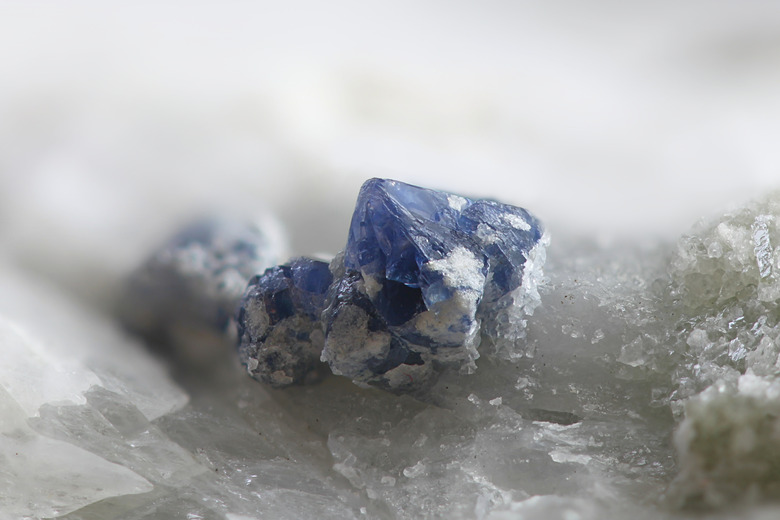What Are The Differences Between The Minerals Calcite And Quartz?
Quartz and calcite are common minerals in the rocks around the world. Both minerals form in a variety of colors, such as purple, white, brown, gray and colorless, which at times makes them appear similar. However, these two minerals have many distinctively different physical and chemical properties that differentiate them.
Hardness
Hardness
Mineral hardness is a key characteristic that scientists use in sample identification. Quartz is about four times harder than calcite. A piece of quartz can scratch a sample of calcite, but calcite cannot scratch quartz. If you have a sample if each, try to scratch one sample with the other to observe the difference in the hardness. You also can test the hardness of these two minerals using a pocketknife. The blade of the knife has a hardness value between calcite and quartz. The knife can scratch a calcite crystal but will not scratch quartz.
Crystal Shape
Crystal Shape
Quartz and calcite crystals have distinctively different crystal shapes. One of the most common forms of calcite is a rhombohedron, though it also can form prismatic crystals, scalenohedrons and other less common forms and combinations. The most common form of quartz is a hexagonal prism that is terminated with six-sided pyramids at either end of the crystal. Many quartz crystals may not exhibit the perfect crystal shape or may appear to have a three-sided pyramid at the terminus.
Cleavage and Fracture
Cleavage and Fracture
Cleavage is a crystal's ability to break along weak bonds within the crystal structure. The break results in a smooth surface. Calcite exhibits rhombic cleavage, which means that it breaks along three planes of weakness that create a rhombic shape for the crystal. Quartz does not have strong cleavage but can fracture across the crystal, leaving a rough surface on the broken crystal. Quartz fractures are described as conchoidal when the fractured surface exhibits a swirl pattern on the stone.
Chemical Composition
Chemical Composition
Calcite is a calcium carbonate mineral while quartz is a silicon dioxide crystal. Visually, you cannot tell the difference in the mineral composition, but you can perform a test to determine if the crystal you have is calcite. Calcium carbonate reacts with an acid to produce bubbles on the surface of the crystal. To test your sample, drop dilute hydrochloric acid, lemon juice or vinegar onto the sample and watch for bubbles. Quartz does not react to a dilute acid.
References
Cite This Article
MLA
Barnhart, Tracy. "What Are The Differences Between The Minerals Calcite And Quartz?" sciencing.com, https://www.sciencing.com/differences-between-minerals-calcite-quartz-8447374/. 13 March 2018.
APA
Barnhart, Tracy. (2018, March 13). What Are The Differences Between The Minerals Calcite And Quartz?. sciencing.com. Retrieved from https://www.sciencing.com/differences-between-minerals-calcite-quartz-8447374/
Chicago
Barnhart, Tracy. What Are The Differences Between The Minerals Calcite And Quartz? last modified March 24, 2022. https://www.sciencing.com/differences-between-minerals-calcite-quartz-8447374/
